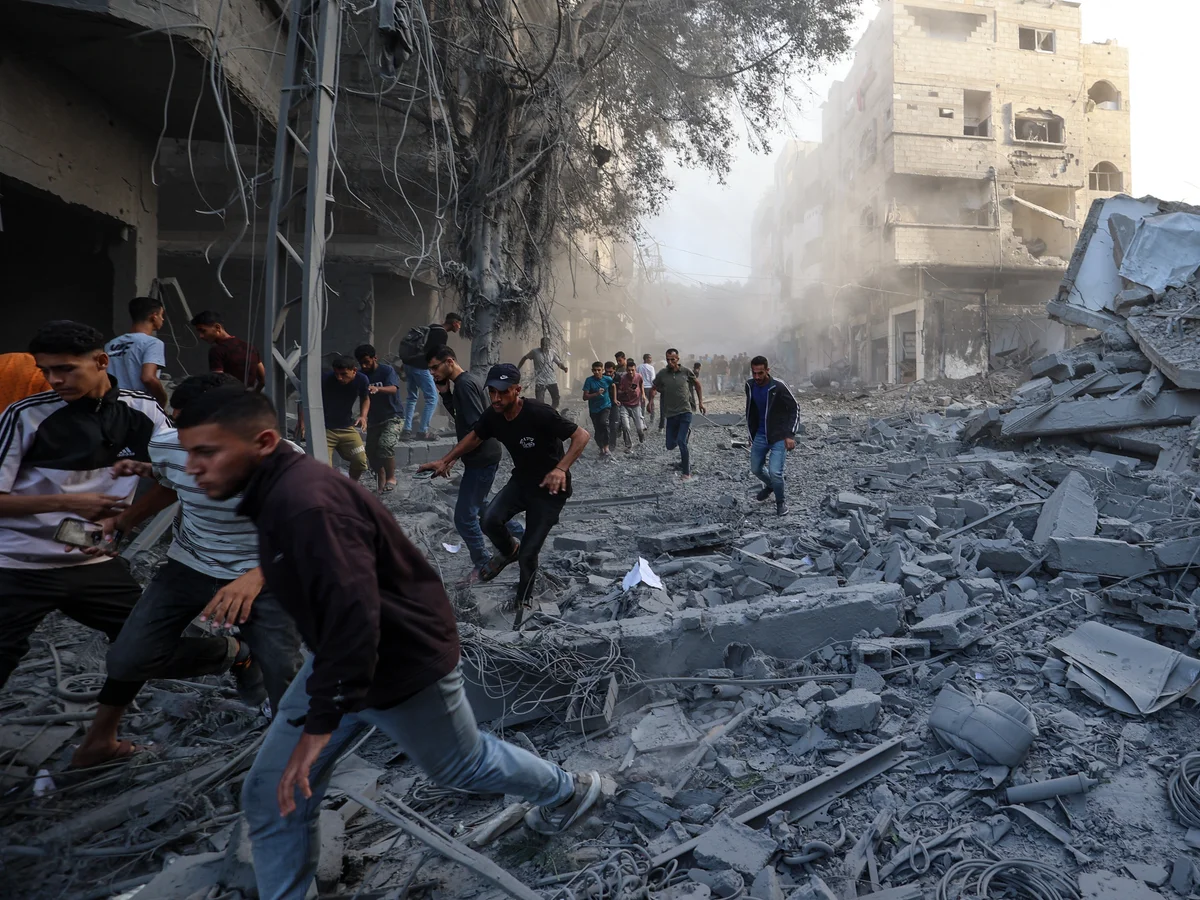Israel Conducts Airstrikes in Gaza Amid Accusations of Ceasefire Violations by Hamas
Israel Conducts Airstrikes in Gaza Amid Accusations of Ceasefire Violations by Hamas
By
Calder Monroe
Last updated:
October 29, 2025
First Published:
October 29, 2025

Photo: The Guardian
Israeli fighter jets launched a series of airstrikes across Gaza on Tuesday following allegations that Hamas violated the ceasefire agreement brokered earlier this month by U.S. President Donald Trump. The strikes are the most significant escalation since the truce went into effect on October 10, halting a two-year conflict that began with Hamas-led attacks on Israel on October 7, 2023.
Local health authorities reported at least 26 fatalities, including five in the Bureij refugee camp, four in Gaza City’s Sabra neighborhood, and five in a vehicle in Khan Younis. Attacks continued into the early hours of Wednesday, with residential buildings, vehicles, and even areas near Shifa Hospital struck. Witnesses reported two wounded in a tent in Zawayda, while Gaza health officials say the total confirmed death toll from the ongoing conflict has reached 68,000, with thousands more missing.
Israel’s Position and Ceasefire Allegations
The Israeli military has not immediately issued a formal comment regarding the strikes. Prime Minister Benjamin Netanyahu’s office stated he had ordered immediate “powerful attacks” in response to what Israel described as Hamas’ breach of the ceasefire. According to an Israeli military official, Hamas attacked Israeli forces in a zone under Israeli control, which the military cited as justification for the retaliatory strikes.
“This is yet another blatant violation of the ceasefire,” the official said, emphasizing Israel’s stance on upholding security measures despite ongoing negotiations.
Disputes Over Hostage Remains
A central point of contention remains the transfer of Israeli hostage remains. Netanyahu accused Hamas of handing over incorrect remains, citing Ofir Tzarfati, an Israeli soldier killed during the October 7 attack, whose body had already been partially retrieved. Hamas initially planned to hand over the body of another missing hostage but postponed, alleging Israeli ceasefire violations.
Al-Qassam Brigades, Hamas’ armed wing, reported the recovery of two Israeli hostages, Amiram Cooper and Sahar Baruch, amid ongoing search operations. Hamas accused Netanyahu of using the issue as a pretext to avoid fulfilling Israel’s obligations under the ceasefire.
Search Operations and Humanitarian Impact
Efforts to recover hostages and bodies have intensified, with Egyptian teams using heavy machinery in Khan Younis and Nuseirat. Hamas fighters reportedly coordinated with these teams to search tunnels believed to contain some of the bodies. Excavations have reached dozens of meters underground, highlighting the challenging and dangerous nature of recovery efforts amid the rubble of Gaza.
U.S. Role and Ceasefire Stability
Despite the escalation, U.S. officials, including Vice President JD Vance, have maintained that the ceasefire remains largely intact. “There will be skirmishes here and there, but the president’s peace is going to hold,” he said, noting that minor violations are expected in such fragile agreements.
The White House has not confirmed whether Israel coordinated with U.S. officials prior to the airstrikes. The ongoing dispute over hostages and body transfers remains one of the most sensitive elements of the ceasefire, which originally involved the release of all living hostages by Hamas in exchange for nearly 2,000 Palestinian prisoners and a halt to Israeli military operations.
Outlook
The latest strikes underline the fragility of the U.S.-brokered truce and the high stakes in maintaining peace. As Israel and Hamas navigate disputes over hostages, ceasefire violations, and accountability for casualties, international attention remains focused on efforts to prevent a full-scale resurgence of hostilities in Gaza.
With tensions escalating and thousands of lives affected, analysts warn that any misstep could quickly unravel the ceasefire, placing both Israeli and Palestinian civilians at heightened risk amid ongoing conflict.
Popular articles
Subscribe to unlock premium content
The Unexpected Boom of Backyard Hydroponics in North America

Why Collecting Vintage Mechanical Cameras Has Become a $100 Million Market

The Secret Market for Classic American Muscle Cars in Japan

The Unexpected Boom of Backyard Hydroponics in North America

Why Collecting Vintage Mechanical Cameras Has Become a $100 Million Market

The Unexpected Boom of Backyard Hydroponics in North America









